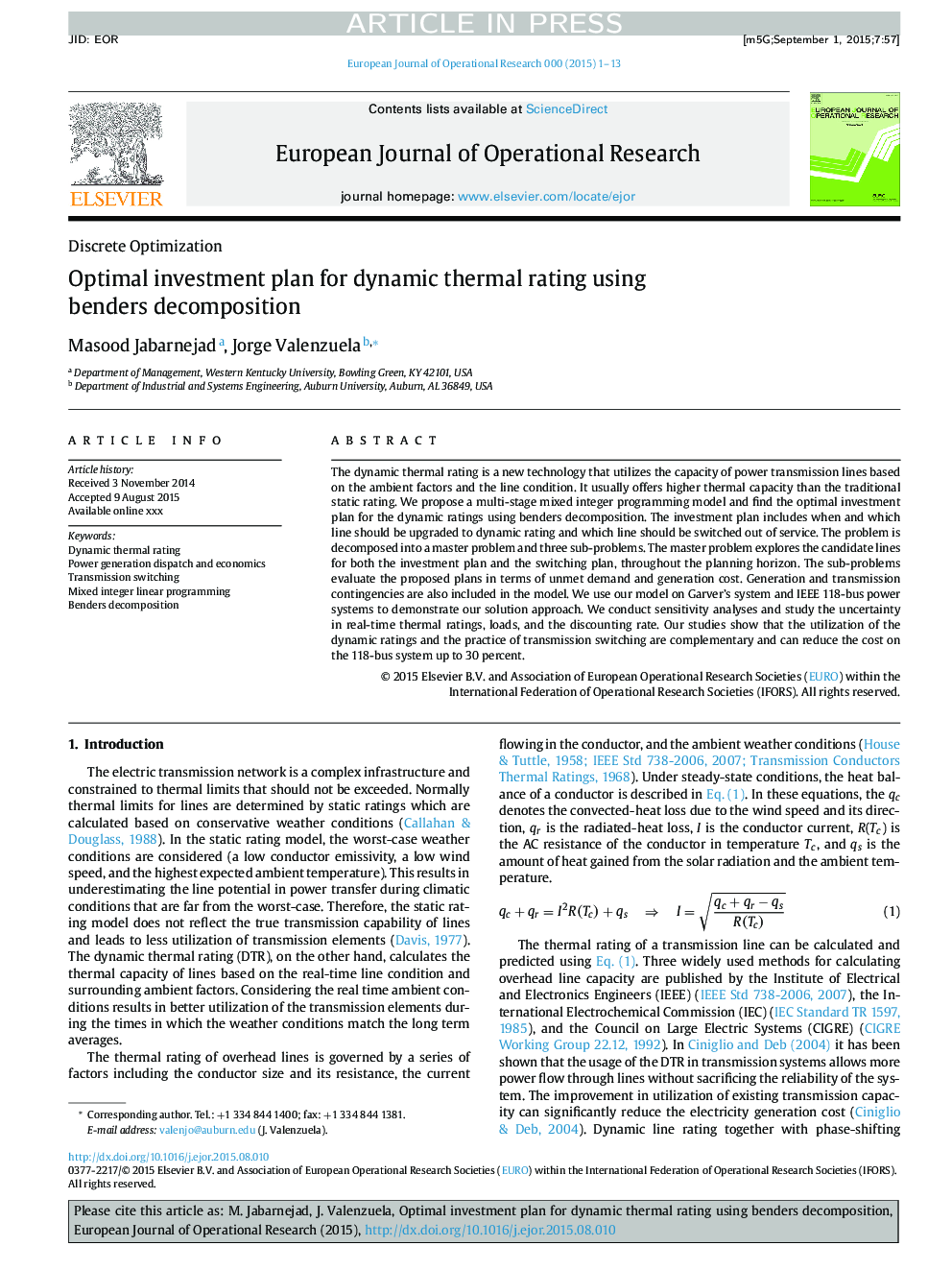| Article ID | Journal | Published Year | Pages | File Type |
|---|---|---|---|---|
| 6896163 | European Journal of Operational Research | 2016 | 13 Pages |
Abstract
The dynamic thermal rating is a new technology that utilizes the capacity of power transmission lines based on the ambient factors and the line condition. It usually offers higher thermal capacity than the traditional static rating. We propose a multi-stage mixed integer programming model and find the optimal investment plan for the dynamic ratings using benders decomposition. The investment plan includes when and which line should be upgraded to dynamic rating and which line should be switched out of service. The problem is decomposed into a master problem and three sub-problems. The master problem explores the candidate lines for both the investment plan and the switching plan, throughout the planning horizon. The sub-problems evaluate the proposed plans in terms of unmet demand and generation cost. Generation and transmission contingencies are also included in the model. We use our model on Garver's system and IEEE 118-bus power systems to demonstrate our solution approach. We conduct sensitivity analyses and study the uncertainty in real-time thermal ratings, loads, and the discounting rate. Our studies show that the utilization of the dynamic ratings and the practice of transmission switching are complementary and can reduce the cost on the 118-bus system up to 30 percent.
Keywords
Related Topics
Physical Sciences and Engineering
Computer Science
Computer Science (General)
Authors
Masood Jabarnejad, Jorge Valenzuela,
